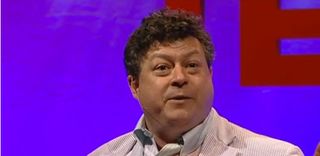How to balance creativity with business needs
Can 'suits' and 'creatives' come together in a meeting of minds? Alastair Eilbeck, creative consultant and digital artist at Amaze, offers a qualified yes.
Words: Alastair Eilbeck
I work as a creative in the digital industry and also have an arts practice. So I like to dream that occasionally the two arenas can come together, and that there is a common ground that allows for artistic authorship and vision combined with a tangible benefit for a commercial partner or client.
Over the years, creativity in digital media has become more and more of a democratic process with input from information architects, strategists, analytic consultants, user and client workshops. Creativity and design should in theory be based on a top-down, empirical and measurable return on investment. This is a positive and necessary step back to the older days of relying on the instincts of a single creative.
I am a strong advocate of design based on research, prototyping and testing. At the same time, I also treasure the ‘big idea’. The single precise vision that comes from an individual pondering on a line of thought, even better if that line of thought isn't following a client brief but on something more universal or existential.
Focus on small things
The preamble behind this thought piece is a presentation I gave at a client workshop showcasing the creativity of my agency, Amaze. This provided me with an opportunity to promote my thoughts on the business benefits of an artistic approach to marketing, branding and PR and how art can have a place at a deep level within a business.
In a nutshell, the proposition in my talk was that small initiatives, if rooted in a simple artistic idea, can have an effect greatly disproportionate to the effort.

I started off with an excerpt from a TED talk given by Rory Sutherland. He spoke about Virgin Upper Class and two beautiful silver aeroplane salt and pepper dispensers. He pointed out that the universal response to such items is, "ooh I could pilfer those" - until you turn them over and engraved under each one are the words... "stolen from Virgin Upper Class".
Another example is a lift in a Swedish hotel that has the normal lift buttons but when you press them they play different music.

The point of these examples is that from a branding perspective, comparatively inexpensive simple ideas live long in the memory - much more than the millions of pounds businesses spend making themselves identical to their competitors.
Bottom-up approach
The other key element that I focus on in my own practice is a ‘bottom-up’ approach, adding some theatre to the most basic human interaction. My catchphrase in my experiments with public art is: "Never underestimate the supposedly reserved British public, who happily express themselves when given the opportunity". It’s not easy getting the balance between forcing a message or conceit onto an unsuspecting person and creating an enjoyable or thought-provoking diversion and counterpoint to their normal day.
I think another cornerstone to the experience is originality, in the sense that you remove as much reference point to the interaction and the context. So it could be an unoriginal idea presented in a completely original context or vice versa. The key is to disarm the participant, to clear the decks of preconceptions and allow the idea to be approached at face value.
Conclusion
I'm looking to highlight the obvious elements within an art practice that bring depth and integrity to work, mostly authorship and independence. This is in the hope that the artist will bring fresh eyes and a very individual lens to a project, will take more risks and more personal responsibility and become less embedded in a corporate process.
Liked this? Then read these!
- What is Typography? Learn the basic rules and terms of type!
- Master studio portrait photography
- 101 Photoshop tips and tricks
Alastair Eilbeck is creative consultant and digital artist at Amaze, a leading full service marketing and technology company.

Thank you for reading 5 articles this month* Join now for unlimited access
Enjoy your first month for just £1 / $1 / €1
*Read 5 free articles per month without a subscription

Join now for unlimited access
Try first month for just £1 / $1 / €1
Get the Creative Bloq Newsletter
Daily design news, reviews, how-tos and more, as picked by the editors.
The Creative Bloq team is made up of a group of design fans, and has changed and evolved since Creative Bloq began back in 2012. The current website team consists of eight full-time members of staff: Editor Georgia Coggan, Deputy Editor Rosie Hilder, Ecommerce Editor Beren Neale, Senior News Editor Daniel Piper, Editor, Digital Art and 3D Ian Dean, Tech Reviews Editor Erlingur Einarsson and Ecommerce Writer Beth Nicholls and Staff Writer Natalie Fear, as well as a roster of freelancers from around the world. The 3D World and ImagineFX magazine teams also pitch in, ensuring that content from 3D World and ImagineFX is represented on Creative Bloq.
